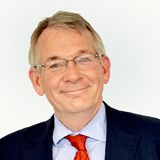Germany and the Return of the Holy Roman Empire
There are similarities between today’s Europe and the patchwork of around 300 territories and principalities which comprised the Holy Roman Empire of the German Nation.
December 7, 2017
The laborious process for forming Germany’s next government brings to mind the remark attributed to Charles de Gaulle, France’s foremost post-war president: “How can you govern a country that has 246 varieties of cheese?”
The increasingly mixed, heterogenous nature of German politics indicates that Europe’s biggest economy, at least according to de Gaulle’s mindset, is growing ungovernable.
Germany will not suddenly become unstable. Belgium and the Netherlands have famously endured long periods – 589 and 208 days respectively – in forming governments in recent times. Their economies have not suffered significant setbacks.
However, the rest of Europe, led by Emmanuel Macron, France’s new president, will have to wait a long time for Germany to answer some pressing questions, particularly over deepening integration in the euro area.
There are some similarities between today’s Europe and the patchwork of around 300 territories and principalities, all with varying governance and sovereignty, which comprised the medieval Holy Roman Empire of the German Nation.
As Voltaire said, it was ‘neither holy, nor Roman, nor a nation’ – but it did stick around for 1,000 years.
Germany’s political fragmentation
The election of 24 September laid bare Germany’s growing political fragmentation.
The two main parties which had formed a “grand coalition” in Berlin since 2013 – Chancellor Angela Merkel’s Christian Democratic Union and Christian Social Union, and Martin Schulz’s Social Democrats (SPD) – slumped to 54% of the votes, the lowest since the Second World War.
When Merkel established her first coalition with the SPD, in 2005, the two parties scored a combined 69%. Up to German unification in 1990, the CDU/CSU and SPD accounted for 75%-90% of votes.
Four weeks of tortuous negotiations on forming a so-called “Jamaica coalition” between the CDU/CSU, the Green ecology party and the liberal Free Democratic Party juddered to a halt shortly before midnight on 19 November.
Ideological differences among the disparate quartet proved unbridgeable, particularly for the FDP, keen to rebuild identity after winning back seats in the Bundestag following four years of absence.
The divide was especially strong on all the big issues affecting Germany – climate change, dealing with immigration and creating new institutions and funding to safeguard the future of the euro.
Holy Roman Empire-style complexity
The coalition wrangling demonstrated Holy Roman Empire-style complexity. The Berlin talks broke down after 55 delegates from four parties laboured for four weeks yielding a 61-page policy draft with 237 points of discord.
Merkel has called on all sides to bury differences. She wants to avoid new elections next spring which could bring an even bigger swing to the anti-euro, anti-immigrant Alternative for Germany (AfD).
With 12.6% of the votes on 24 September, the AfD is now a strong force in the federal parliament, the first far-right party in the Bundestag since the early 1950s.
Merkel has reminded politicians that the Weimar republic fractured in 1930 when failed coalition talks provided an opening for Adolf Hitler’s Nazi party.
Merkel wants to reforge a “grand coalition.” She is backed by Frank-Walter Steinmeier, the German president, who summoned CDU/CSU and SPD leaders for coalition talks on 30 November.
Potential drawbacks
However, there are three potential drawbacks. First, each of Merkel’s alliance partners in her 12-year rule – twice with the SPD, once with the FDP – has slumped to post-war lows in elections following their coalition experiences.
The SPD will lay down stringent conditions in terms of policies and ministerial seats as the price for re-entering power with Merkel.
Second, Germany’s coalition politics are so complicated that there is no set working model for another conservative-SPD coalition. Fifteen coalitions run Germany’s 16 federal states, with 10 different models.
Third, even if a “grand coalition” proves realisable in the first few weeks of 2018, it will enshrine the unruly AfD as the formal opposition party in Germany – giving it status and disruptive influence unimagined even a few months ago.
Whatever happens, Germany in coming months will not be a place for smooth policy-making.
Takeaways
There are similarities between today's Europe and the patchwork of around 300 territories and principalities which comprised the Holy Roman Empire of the German Nation.
The increasingly mixed, heterogenous nature of German politics indicates that Europe's biggest economy is growing ungovernable.
Germany will not suddenly become unstable. However, the rest of Europe will have to wait a long time for Germany to answer some pressing questions.
Merkel has reminded politicians that the Weimar republic fractured in 1930 when failed coalition talks provided an opening for Adolf Hitler's Nazi party.
Germany in coming months will not be a place for smooth policy-making.
